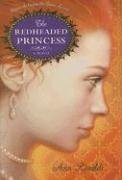
Although the Iron Curtain is gone, the memory of the high drama, tragedy, and comedy that was life in the Soviet Union remains. It meant endless lineups in the cold — lineups enlivened by poetry and paranoia. It meant family life lived in two small rooms, but a family life that was rich in love and laughter. It meant trying to escape all-seeing eyes, especially those of the old ladies in their babushkas who guarded every courtyard.
Tina Grimberg brings color and perception to a life we think of as gray, impersonal, and foreboding. She was born in Kiev and grew up feisty, bright, and funny in a tiny flat with her parents and her older sister. Her descriptions of life in that grand and beleaguered city are by turn hysterical and heartbreaking. When Tina turned fifteen, the government, desperate for foreign wheat, traded “undesireables” for food, and that meant that many Jewish families like Tina’s could leave. Until they could leave on the hair-raising journey that would eventually bring them to Indiana, she was publicly shamed and cut off, but she never lost her affectionate and clear-eyed view of her homeland. This brilliant collection of memories is an unforgettable look behind what was the Iron Curtain; at a way of life that was reality for millions of people in the twentieth century.










